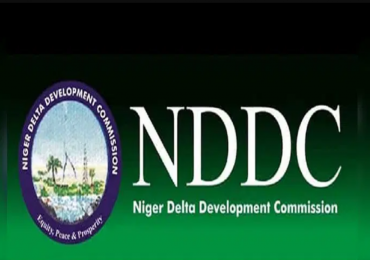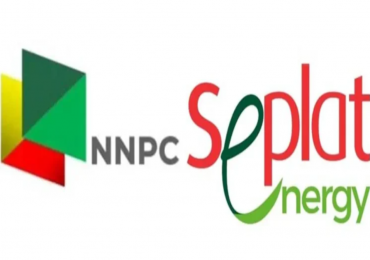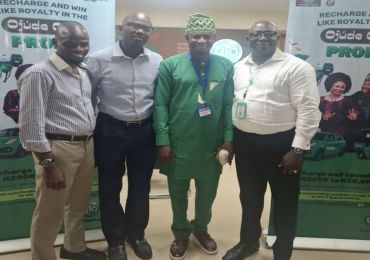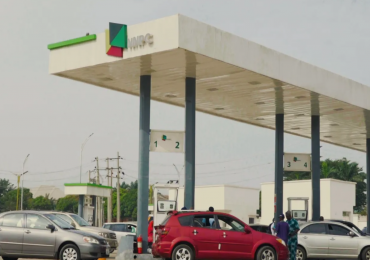ALAOJI POWER PLANT TO RESUME OPERATIONS BY AUGUST 2025
NEWS - Posted on: 15th Jul. 2025 at 7:41PM
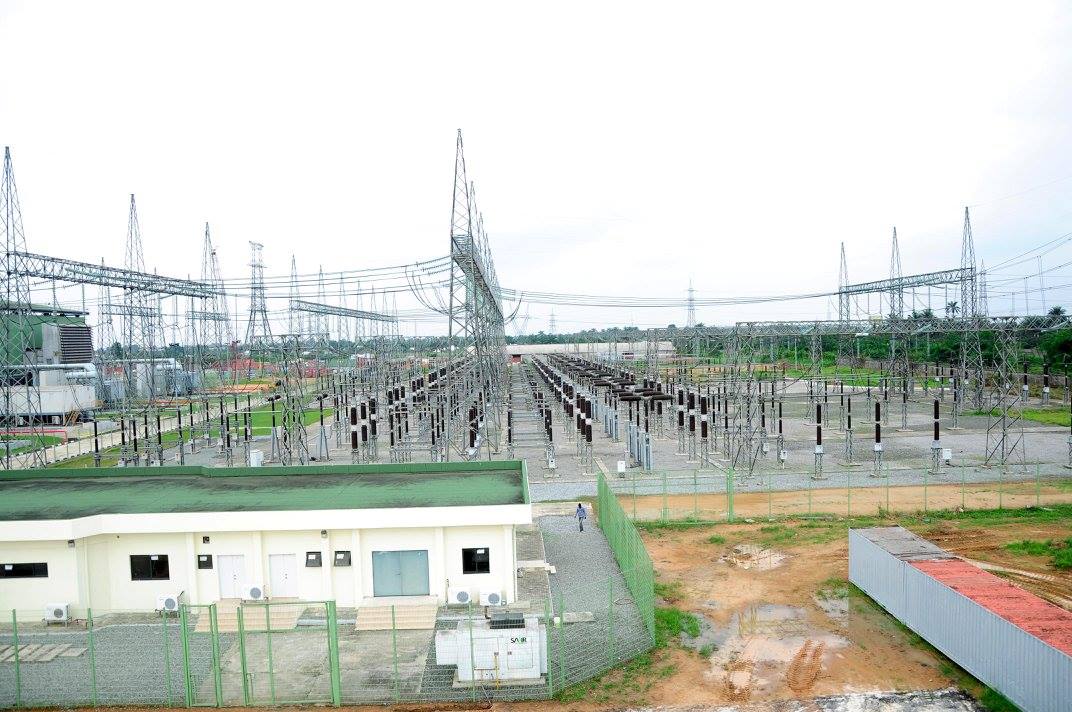 The Managing Director of the Niger Delta Power Holding Company (NDPHC), Jennifer Adighije, has announced that the long-dormant Alaoji Power Plant will return to operation by August 2025. This move is part of NDPHC’s broader strategy to revitalise idle generation assets and boost national grid supply.
The Managing Director of the Niger Delta Power Holding Company (NDPHC), Jennifer Adighije, has announced that the long-dormant Alaoji Power Plant will return to operation by August 2025. This move is part of NDPHC’s broader strategy to revitalise idle generation assets and boost national grid supply.
Adighije made the disclosure on Thursday during a high-level visit to the Nigerian Independent System Operator (NISO) headquarters in Abuja, where she led a delegation to foster collaboration with the newly restructured grid operator. The engagement follows the recent unbundling of the Transmission Company of Nigeria (TCN).
The NDPHC boss revealed that one additional unit at the Omotosho Power Plant is expected to come online by the end of July, while the 500MW Alaoji plant — which has been offline for nearly two years — is scheduled to rejoin the grid in August.
She described the reactivation of idle plants as a major operational milestone. “In nine months, we have improved plant availability by 100 per cent or more,” Adighije stated. “My vision was anchored on optimisation — both technical and commercial. We’ve focused on improving the availability of our power plants and the commercialisation of stranded capacity.”
Last month, The PUNCH reported that despite having an installed capacity of over 4,000MW, NDPHC-managed power plants were producing less than 1,000MW. A Nigerian Electricity Regulatory Commission (NERC) report indicated that only Ihovbor 2 Power Plant was operating near capacity, while Alaoji had not generated any power in months.
Adighije reiterated NDPHC’s commitment to supporting the national grid and utilising its installed generation capacity of over 5,000MW across 10 power plants. She, however, appealed for stronger collaboration with NISO, particularly regarding grid access, fair dispatch protocols, and operational flexibility.
“As a government-owned generation company, we operate under strict public procurement laws, unlike private GENCOs,” she explained. “We urge regulatory bodies to consider these constraints when assessing our performance.”
She also highlighted NDPHC’s role in infrastructure development, noting that the company has completed over 50 330kV transmission substations and more than 25 132kV substations, adding over 9,000MVA of transformer capacity to the national grid.
In response, NISO Managing Director Abdul Bello Mohammed commended NDPHC’s strides and pledged the system operator’s support for generation optimisation and dispatch coordination.
“You have a minimum available capacity of 2,000MW, yet we’re only dispatching between 500 and 800MW from your plants. That must change,” Mohammed said.
He stressed the need to integrate NDPHC into the West African Power Pool (WAPP) market to export excess capacity and generate additional revenue. Mohammed also called for the urgent integration of NDPHC’s facilities into the SCADA/EMS platform for improved real-time dispatch and grid stability.
“Free governor mode operation is non-negotiable for frequency control,” he added, noting that while some NDPHC stations are compliant, many are not — placing unnecessary stress on a few generating units.
Mohammed also pledged to review the current Economic Merit Order Dispatch model, citing concerns that public GENCOs like NDPHC are being unfairly treated. He urged the company to contribute data for the development of a least-cost national grid expansion plan aimed at value-driven, cost-efficient infrastructure development.
At the end of the meeting, both NDPHC and NISO reaffirmed their commitment to deepening cooperation as the Nigerian power sector undergoes reforms under the 2023 Electricity Act.
 The Managing Director of the Niger Delta Power Holding Company (NDPHC), Jennifer Adighije, has announced that the long-dormant Alaoji Power Plant will return to operation by August 2025. This move is part of NDPHC’s broader strategy to revitalise idle generation assets and boost national grid supply.
The Managing Director of the Niger Delta Power Holding Company (NDPHC), Jennifer Adighije, has announced that the long-dormant Alaoji Power Plant will return to operation by August 2025. This move is part of NDPHC’s broader strategy to revitalise idle generation assets and boost national grid supply.Adighije made the disclosure on Thursday during a high-level visit to the Nigerian Independent System Operator (NISO) headquarters in Abuja, where she led a delegation to foster collaboration with the newly restructured grid operator. The engagement follows the recent unbundling of the Transmission Company of Nigeria (TCN).
The NDPHC boss revealed that one additional unit at the Omotosho Power Plant is expected to come online by the end of July, while the 500MW Alaoji plant — which has been offline for nearly two years — is scheduled to rejoin the grid in August.
She described the reactivation of idle plants as a major operational milestone. “In nine months, we have improved plant availability by 100 per cent or more,” Adighije stated. “My vision was anchored on optimisation — both technical and commercial. We’ve focused on improving the availability of our power plants and the commercialisation of stranded capacity.”
Last month, The PUNCH reported that despite having an installed capacity of over 4,000MW, NDPHC-managed power plants were producing less than 1,000MW. A Nigerian Electricity Regulatory Commission (NERC) report indicated that only Ihovbor 2 Power Plant was operating near capacity, while Alaoji had not generated any power in months.
Adighije reiterated NDPHC’s commitment to supporting the national grid and utilising its installed generation capacity of over 5,000MW across 10 power plants. She, however, appealed for stronger collaboration with NISO, particularly regarding grid access, fair dispatch protocols, and operational flexibility.
“As a government-owned generation company, we operate under strict public procurement laws, unlike private GENCOs,” she explained. “We urge regulatory bodies to consider these constraints when assessing our performance.”
She also highlighted NDPHC’s role in infrastructure development, noting that the company has completed over 50 330kV transmission substations and more than 25 132kV substations, adding over 9,000MVA of transformer capacity to the national grid.
In response, NISO Managing Director Abdul Bello Mohammed commended NDPHC’s strides and pledged the system operator’s support for generation optimisation and dispatch coordination.
“You have a minimum available capacity of 2,000MW, yet we’re only dispatching between 500 and 800MW from your plants. That must change,” Mohammed said.
He stressed the need to integrate NDPHC into the West African Power Pool (WAPP) market to export excess capacity and generate additional revenue. Mohammed also called for the urgent integration of NDPHC’s facilities into the SCADA/EMS platform for improved real-time dispatch and grid stability.
“Free governor mode operation is non-negotiable for frequency control,” he added, noting that while some NDPHC stations are compliant, many are not — placing unnecessary stress on a few generating units.
Mohammed also pledged to review the current Economic Merit Order Dispatch model, citing concerns that public GENCOs like NDPHC are being unfairly treated. He urged the company to contribute data for the development of a least-cost national grid expansion plan aimed at value-driven, cost-efficient infrastructure development.
At the end of the meeting, both NDPHC and NISO reaffirmed their commitment to deepening cooperation as the Nigerian power sector undergoes reforms under the 2023 Electricity Act.
Posted by: Emdee David
You MUST be logged in to post comment(s)
Comments
No post comments available!
Ad Space
Place your ads here...


